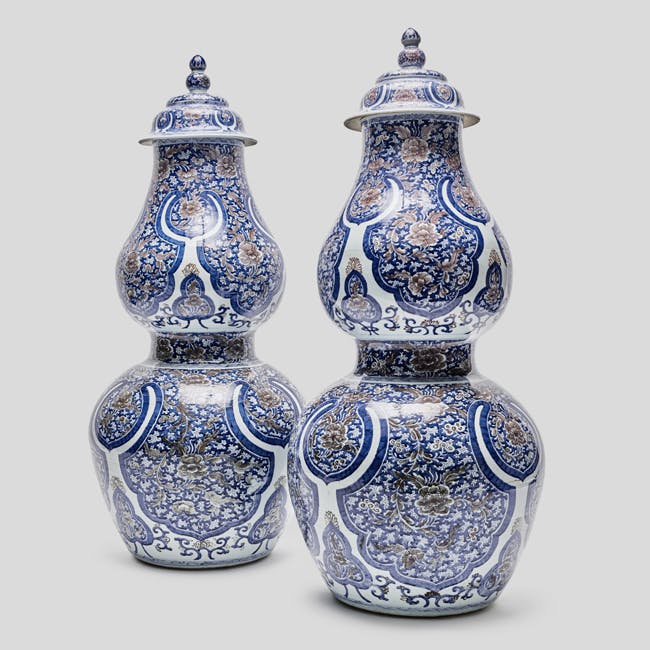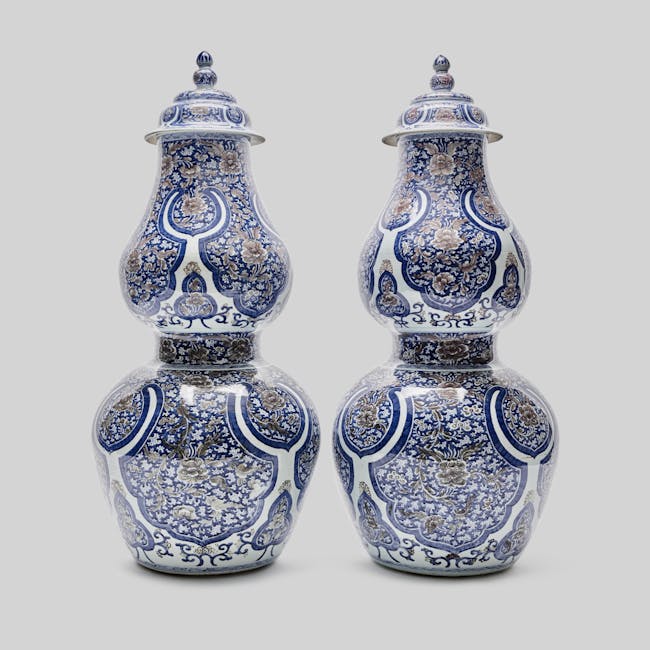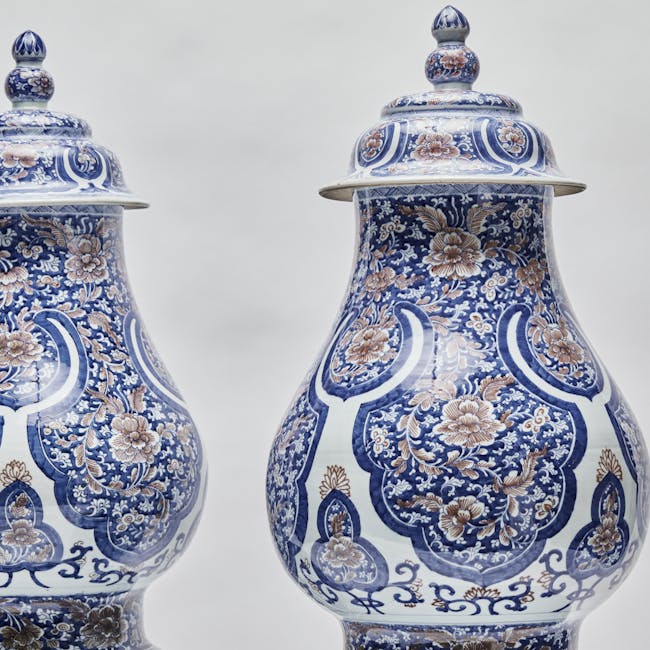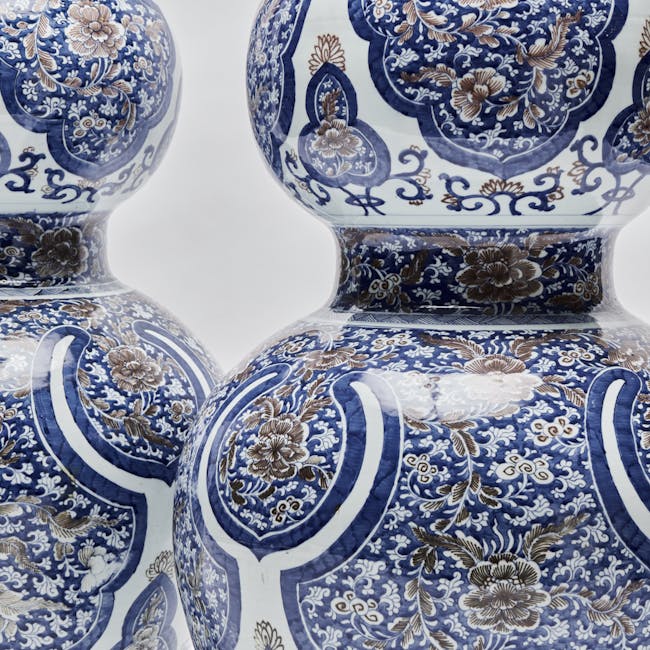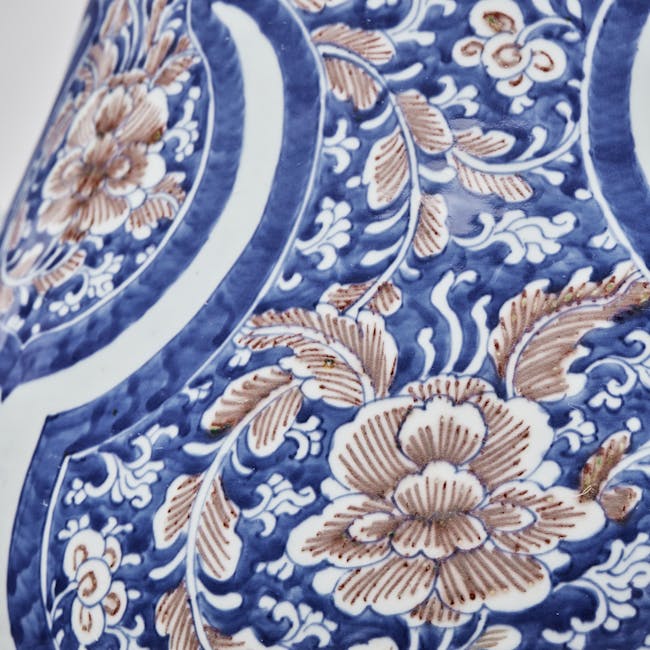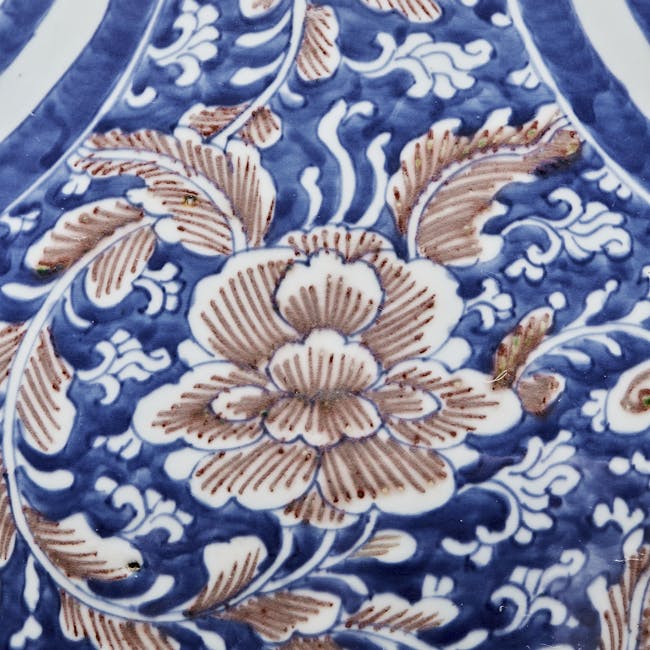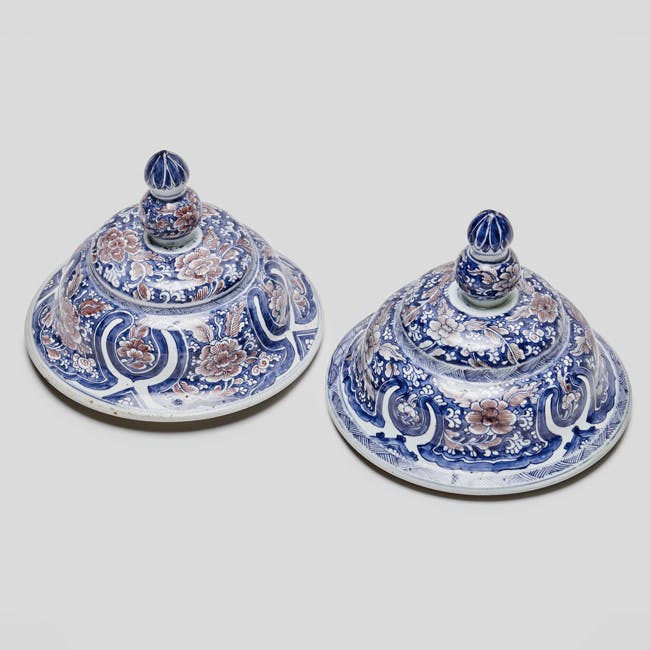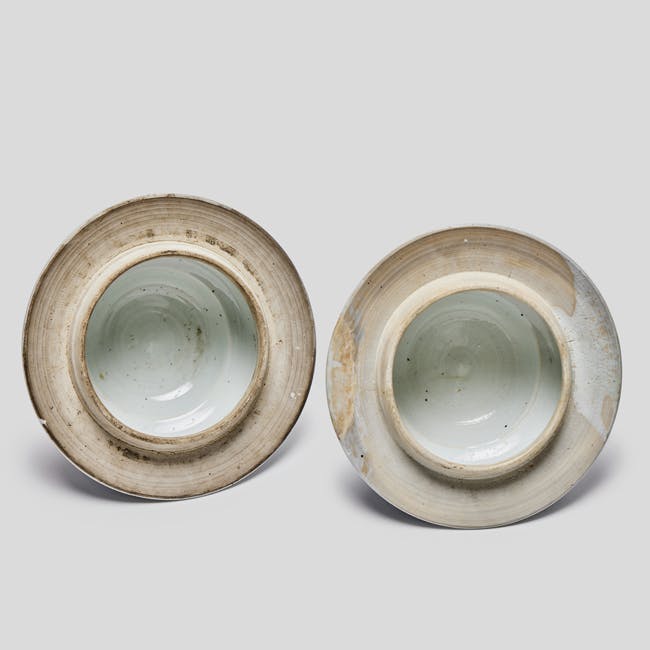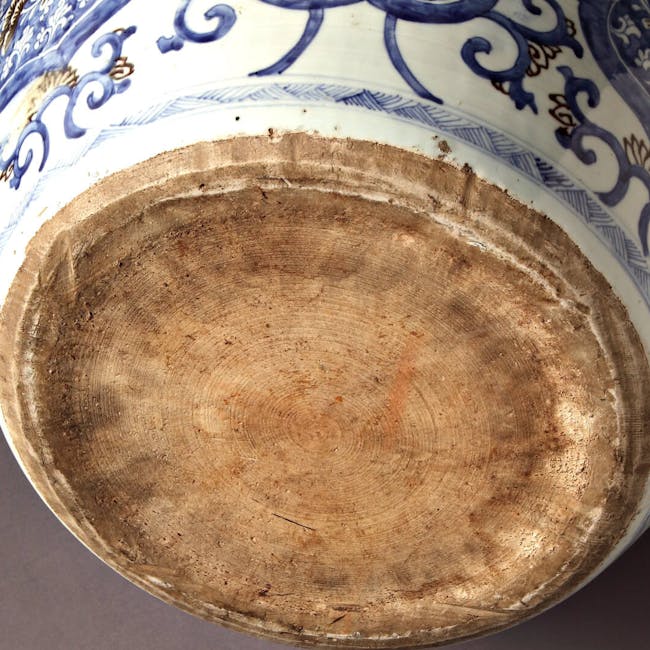A pair of monumental double gourd vases (huluping 葫芦瓶) with cobalt blue and copper-red underglaze decoration. Their tall elegant shape, has a large globular underbody and a slimmer elongated neck bulb. The domed fitted lid has two layers ending in a double gourd-shaped finial. The upper and lower bulb are similarly decorated; with four large hanging lobed lappets alternated with smaller round ones. Each lappet has a broad blue outline and filled with copper-red scrolling peonies, with white foliage reserved on a blue ground. The bottom of each bulb has a border of four leaf-shaped medallions, filled with the same pattern and topped with a stylized lotus. Each medallion connected with foliate scrolling. Around the waist connecting the bulbs, is a band with a matching pattern of foliate scrolls. The top rim and base have a narrow border of zigzag hatching. The double-domed lids repeat the decoration of the body and the top finials are white with blue stylized petals. The undersides of the vases are unglazed and unmarked. One vase has an old handwritten paper label on its neck, with both numbers and letters (not deciphered).
This pair of truly regal vases, were probably made as part of a larger garniture or group and would have undoubtably been made as a private commission through the Dutch East India Company (VOC). Very large jars with covers such as these, must have been technically very difficult to create. Despite their elegant double gourd shape, these weigh a massive 48kg each, establishing the incredible skill of the Chinese potter in the Kangxi period. Beside the challenge of producing a vase of this the monumental size, the more complex double-gourd form, was even more difficult to fire successfully, than a straight-sided vase. The decoration was also more challenging, as it combines two underglaze colours -cobalt blue and copper-red- fired together at a high temperature (1300C) in a reductive atmosphere. Particularly the red colour was not as stable as the blue, its volatile properties often leading to colour variations.
The meaning of the shape and decoration of the vase would have been lost to the Western buyers. In China however, the double-gourd (hulu) or calabash shape was considered very auspicious, standing for blessings and protection. Because of their numerous seeds they were symbols of fertility and by Daoist associated the gourd with longevity, magic and alchemy. The decoration of hanging lappets is known as yun jian ‘cloud collar’ – which refers to the Chinese collars with lobed clouds around the neck of embroidered robes. But it is actually a much more ancient and universally used pattern. Such cloud collars are also found on Tibetan images of buddha, associating the pattern with Buddhism as well. On these vases the lappet shape is filled with peonies; which to the Chinese is the queen of flowers emblematic of wealth and rank, as well as a Chinese symbol for feminine beauty.
There are only a hand full of comparable examples of this size and decoration – the majority of which are in the Porzellansammlung in Dresden - former collection of Augustus the Strong (1670-1733). This collection holds six larger jars and covers (80 cm+ PO1081-84 & PO2014 ), five with just underglaze blue decoration and with the copper red (PO2090). There are four more similar of slightly smaller type, but also with the copper red in the collection (c.75 cm PO2091-93 & PO1121). Two other related examples are in the RA collection, Brazil. Two vases with a comparable decoration, are preserved in the National Museum of Decorative Arts in Madrid (acc.nrs M.N.A.D 10.517 & 10.518). The present pair are larger the Dresden vases and the only examples which have come onto the market in recent years.
